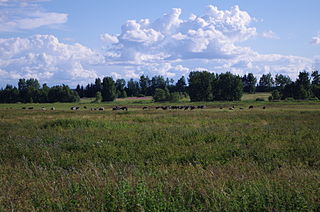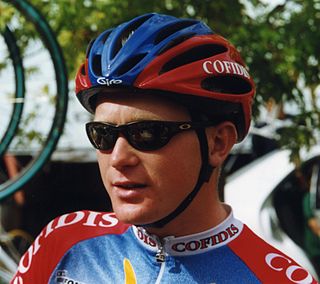
Tartu is the second largest city in Estonia after Tallinn. Tartu has a population of 97,435. It is 186 kilometres southeast of Tallinn and 245 kilometres northeast of Riga, Latvia. Tartu lies on the Emajõgi river, which connects the two largest lakes in Estonia, Lake Võrtsjärv and Lake Peipus. From the 13th century until the end of the 19th century, Tartu was known in most of the world by variants of its historical name Dorpat.

The University of Tartu is a public research university located in the city of Tartu, Estonia. It is the national university of Estonia. It is also the largest and oldest university in the country. The university was founded under the name of Academia Gustaviana in 1632 by Baron Johan Skytte, the Governor-General of Swedish Livonia, Ingria, and Karelia, with the required ratification provided by King Gustavus Adolphus, shortly before the king's death on 6 November in the Battle of Lützen (1632).

Tartu County is one of 15 counties of Estonia.
Biosemiotics is a field of semiotics and biology that studies the prelinguistic meaning-making, biological interpretation processes, production of signs and codes and communication processes in the biological realm.

Kalevi Kull is a biosemiotics professor at the University of Tartu, Estonia.

Uku Masing was an Estonian polymath who contributed to theology, oriental studies, philosophy, poetry, folklore and to the field of ethnology. He was a significant figure in Estonian religious philosophy. Masing also wrote poetry, mostly on religious issues. Masing authored one novel, Rapanui vabastamine ehk Kajakad jumalate kalmistul in the late 1930s, which was published posthumously in 1989. As a folklorist, he was a distinguished researcher of fairy tales, contributing to the international Encyclopedia of the Folktale. He was awarded the Righteous Among The Nations by Yad Vashem and the Israeli Supreme Court for his participation during the Holocaust in helping a Jew in Estonia escape capture from 1941 until the end of the war. His actions exposed him to great danger during this period requiring him to meet with his friend as well as lying to the Gestapo.

Janek Tombak is an Estonian former professional road cyclist. He won the Estonian national championships twice and finished in 10th place at the 2003 UCI Road World Championships.
Anti Selart is an Estonian historian and philosopher.
University of Tartu Press is a university press and publishing house owned by the University of Tartu, Estonia.
Heinrich Rosenthal was an activist of the Estonian national movement, doctor and author.

Narva College of the University of Tartu is a college of the University of Tartu. It was founded in 1999 in the city of Narva, Estonia.
The Treaty of Dorpat (Tartu) was concluded in May 1564, during the Livonian War. Ivan IV of Russia accepted the subordinance of Reval (Tallinn) and some Livonian castles to Erik XIV of Sweden, and in turn Erik XIV accepted the subordinance of the rest of Livonia to Ivan IV. Subsequently, Russia and Sweden agreed on a seven-years' truce.

Toomemägi is a hill in Tartu, Estonia.

University of Tartu Botanical Garden, is a botanical garden in Tartu, Estonia. It belongs to the University of Tartu.

Tähtvere is a neighbourhood of Tartu, Estonia. It has a population of 2,989 and an area of 2.50 km2 (0.97 sq mi).
Semiotics of culture is a research field within semiotics that attempts to define culture from semiotic perspective and as a type of human symbolic activity, creation of signs and a way of giving meaning to everything around. Therefore, here culture is understood as a system of symbols or meaningful signs. Because the main sign system is the linguistic system, the field is usually referred to as semiotics of culture and language. Under this field of study symbols are analyzed and categorized in certain class within the hierarchal system. With postmodernity, metanarratives are no longer as pervasive and thus categorizing these symbols in this postmodern age is more difficult and rather critical.

University of Tartu Sports Hall is a multi-purpose indoor arena complex in Tartu. It was opened in 1982 and is owned by the University of Tartu Academic Sports Club.

Samuel Gottlieb Rudolph Henzi, was a Swiss linguist, Professor at the University of Tartu on the Chair of Exegetics and Oriental languages, the Dean of the theological faculty; head of the Tartu Branch of Russian Bible Society.

Main building of Tartu University is the main building of the University of Tartu. This building is one of the most notable examples of classical style in Estonia.

Alfred Koort was an Estonian philosopher.














